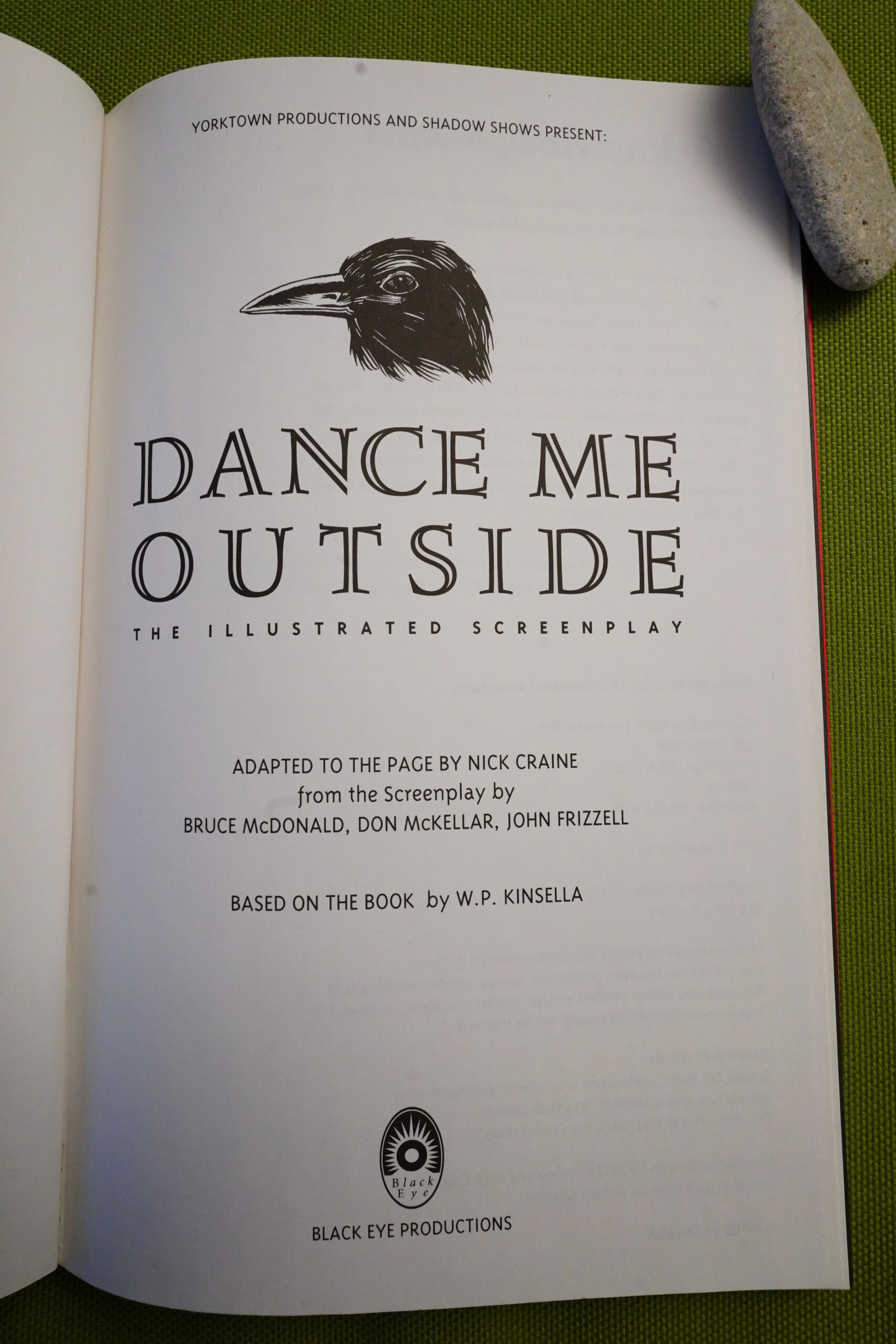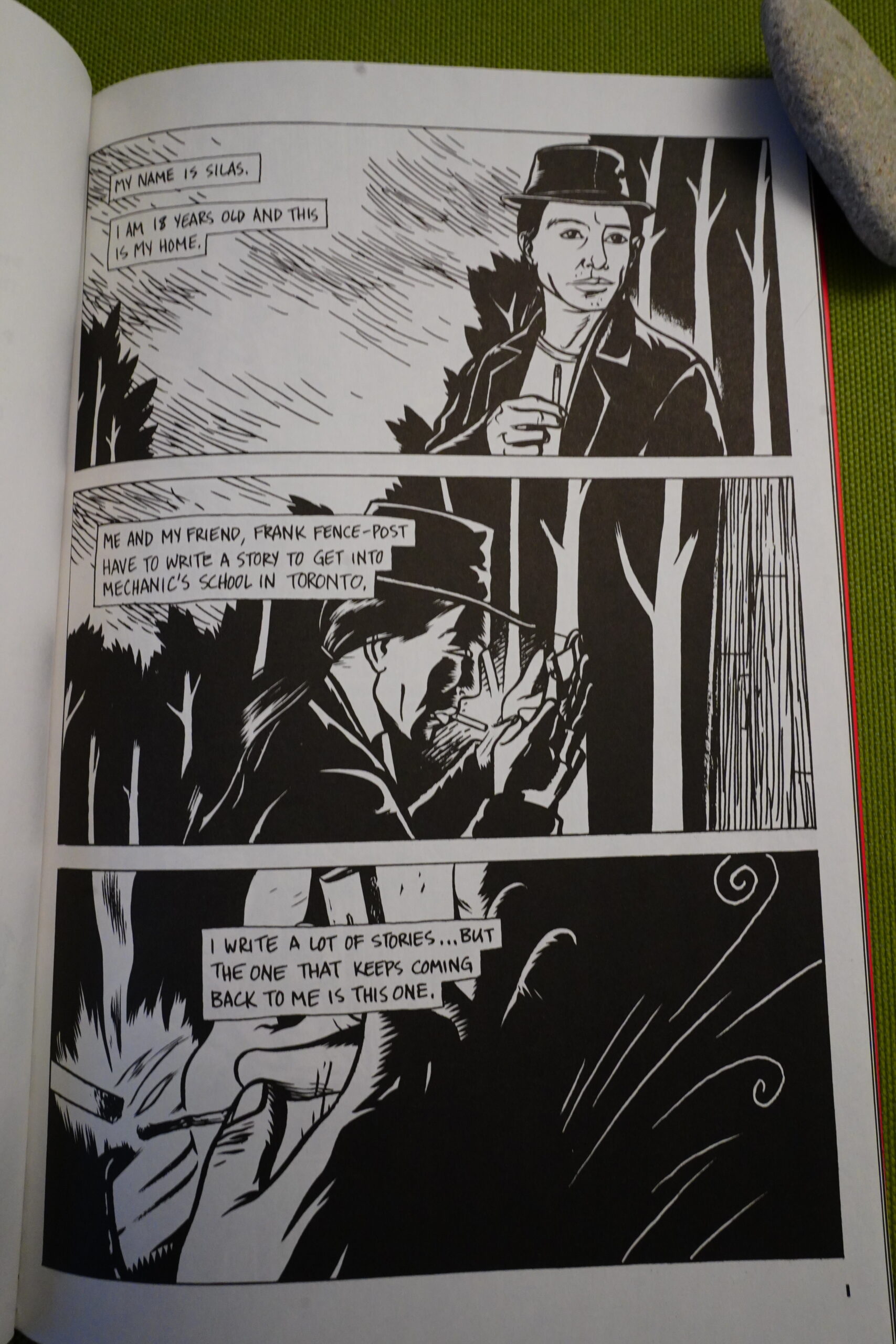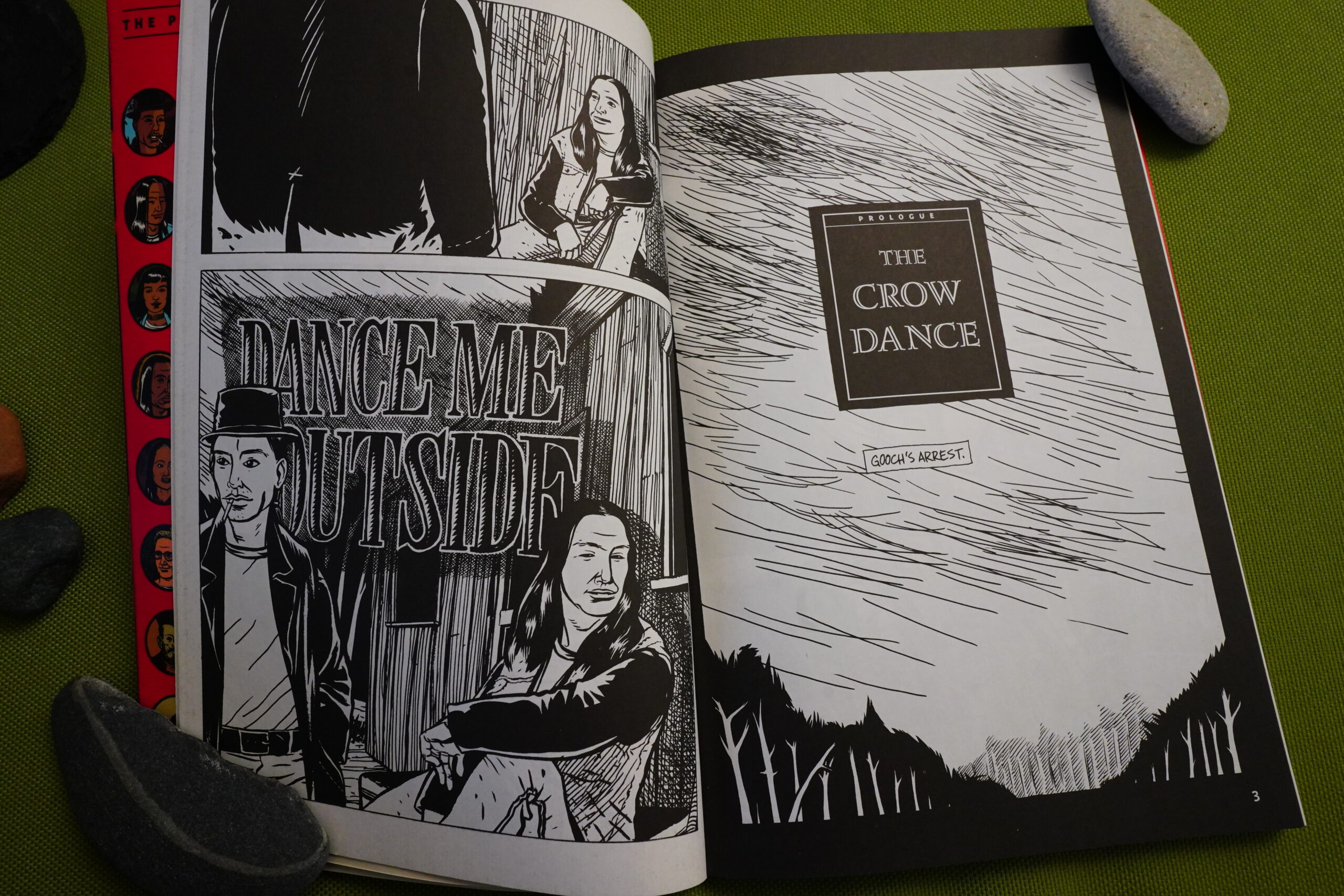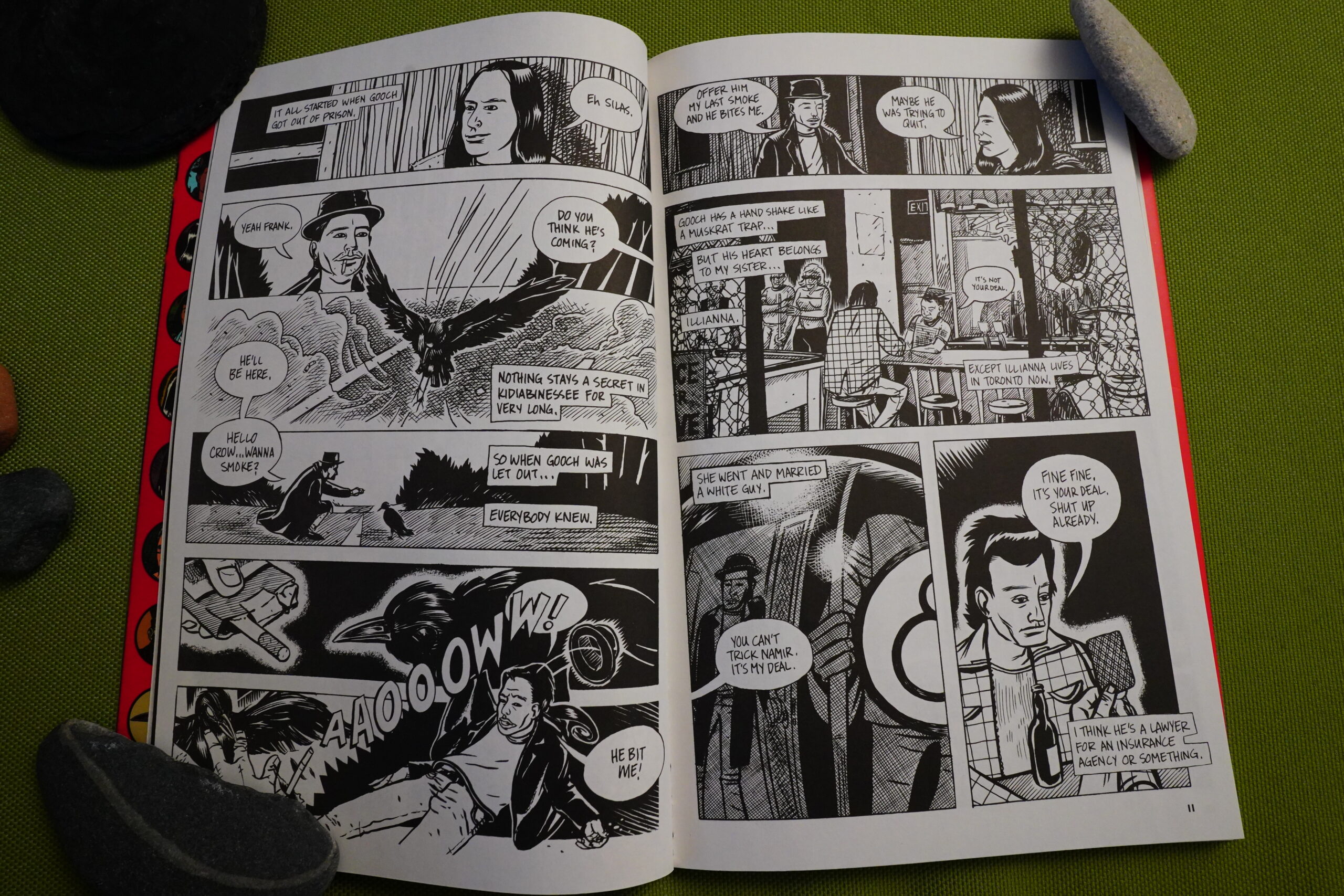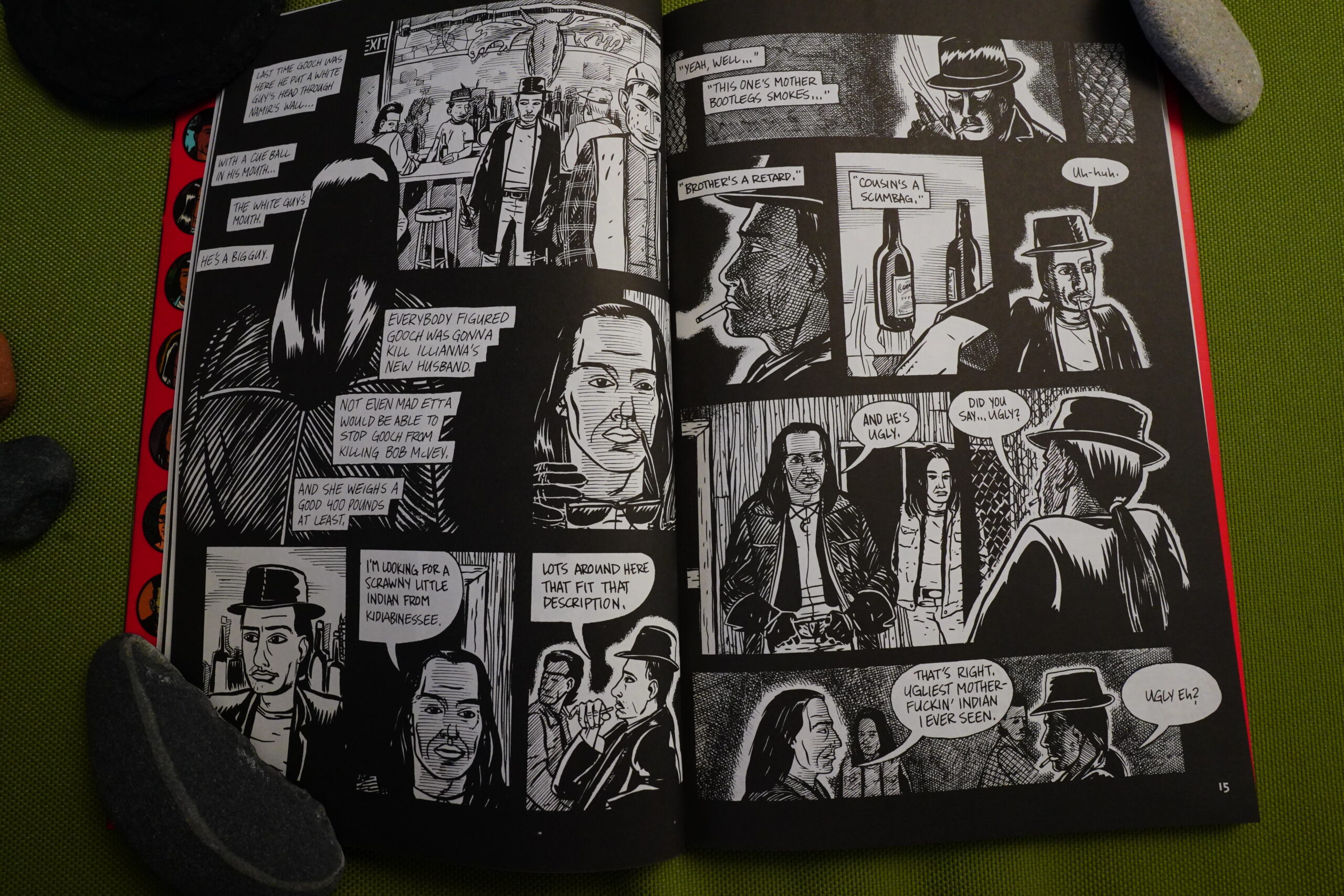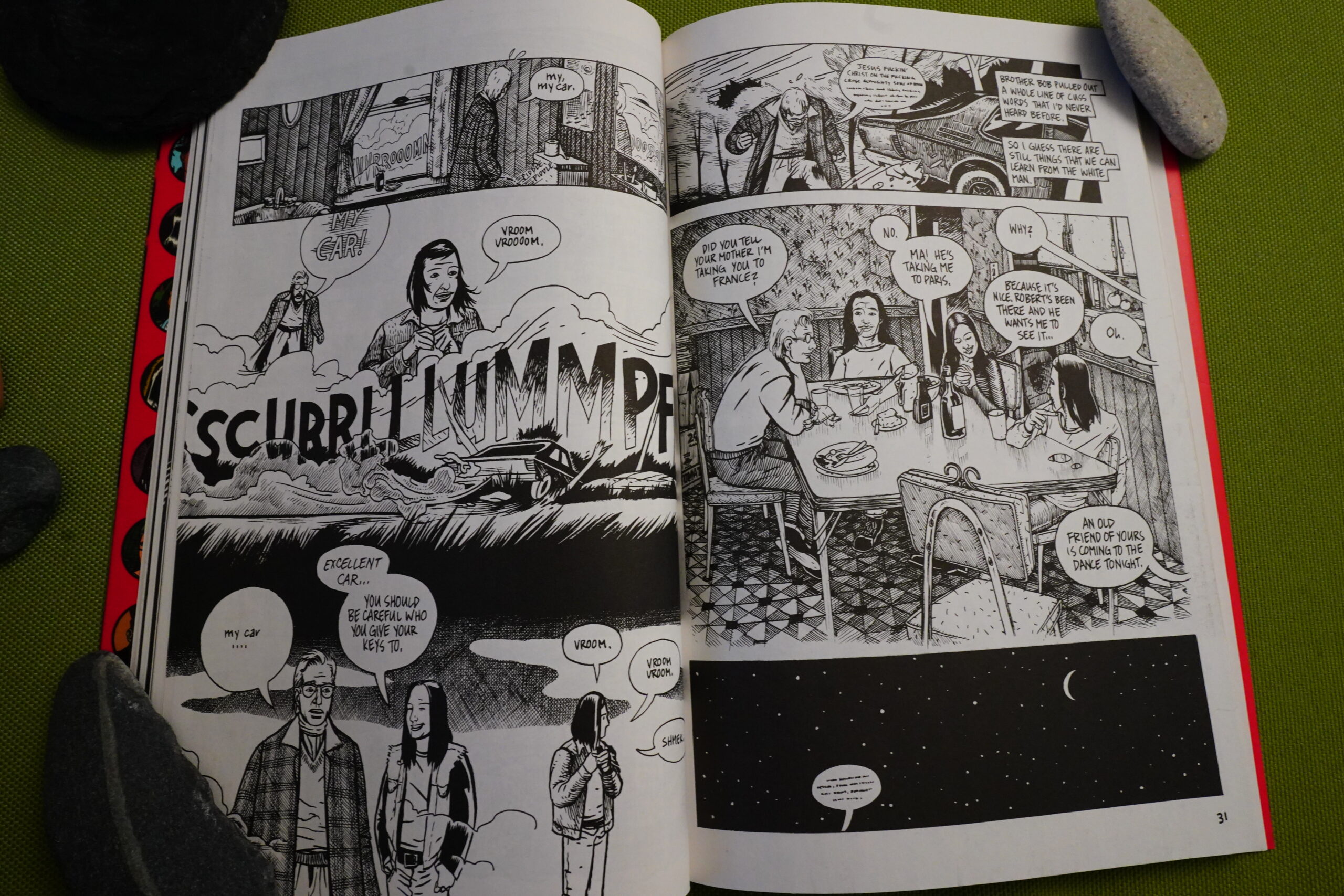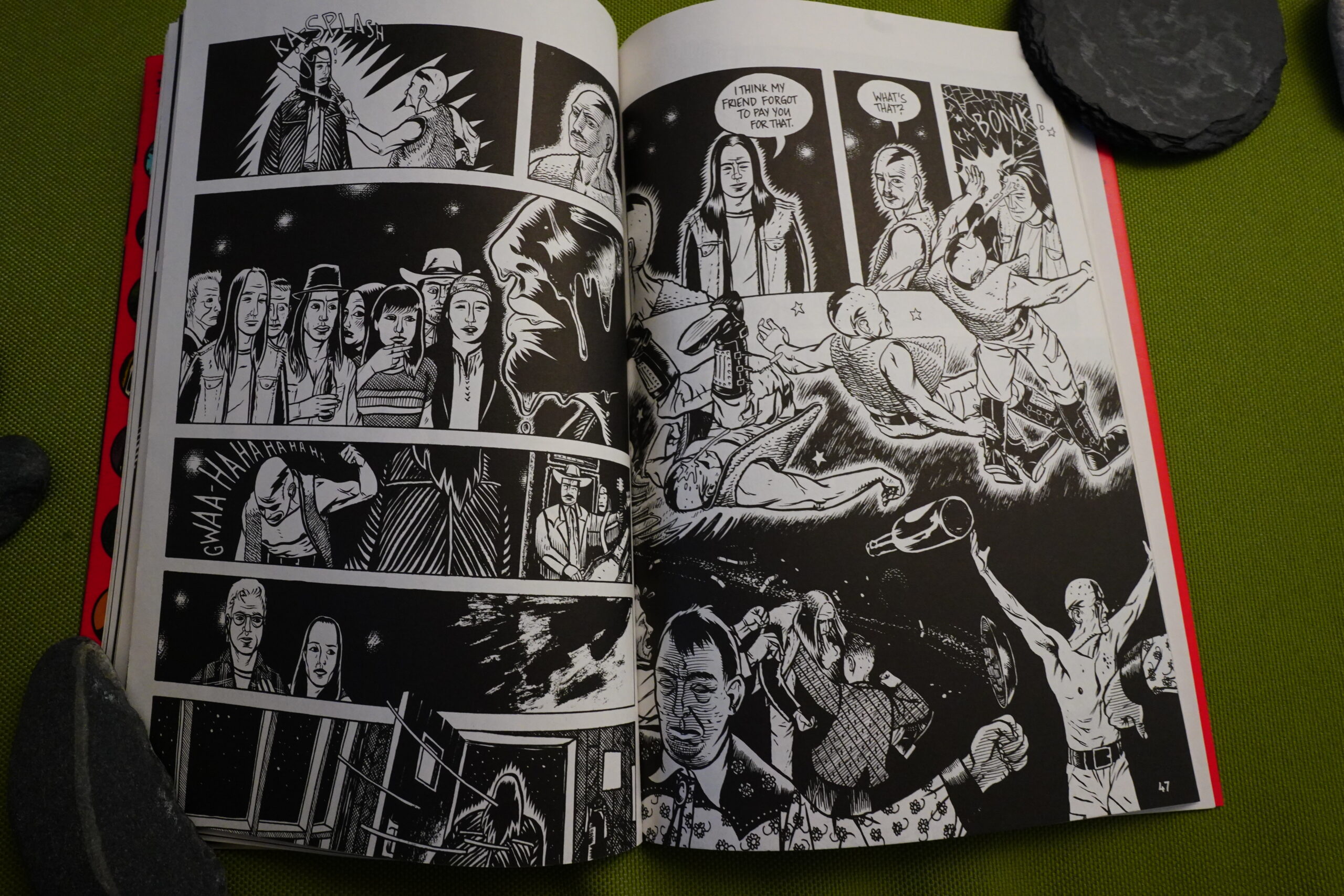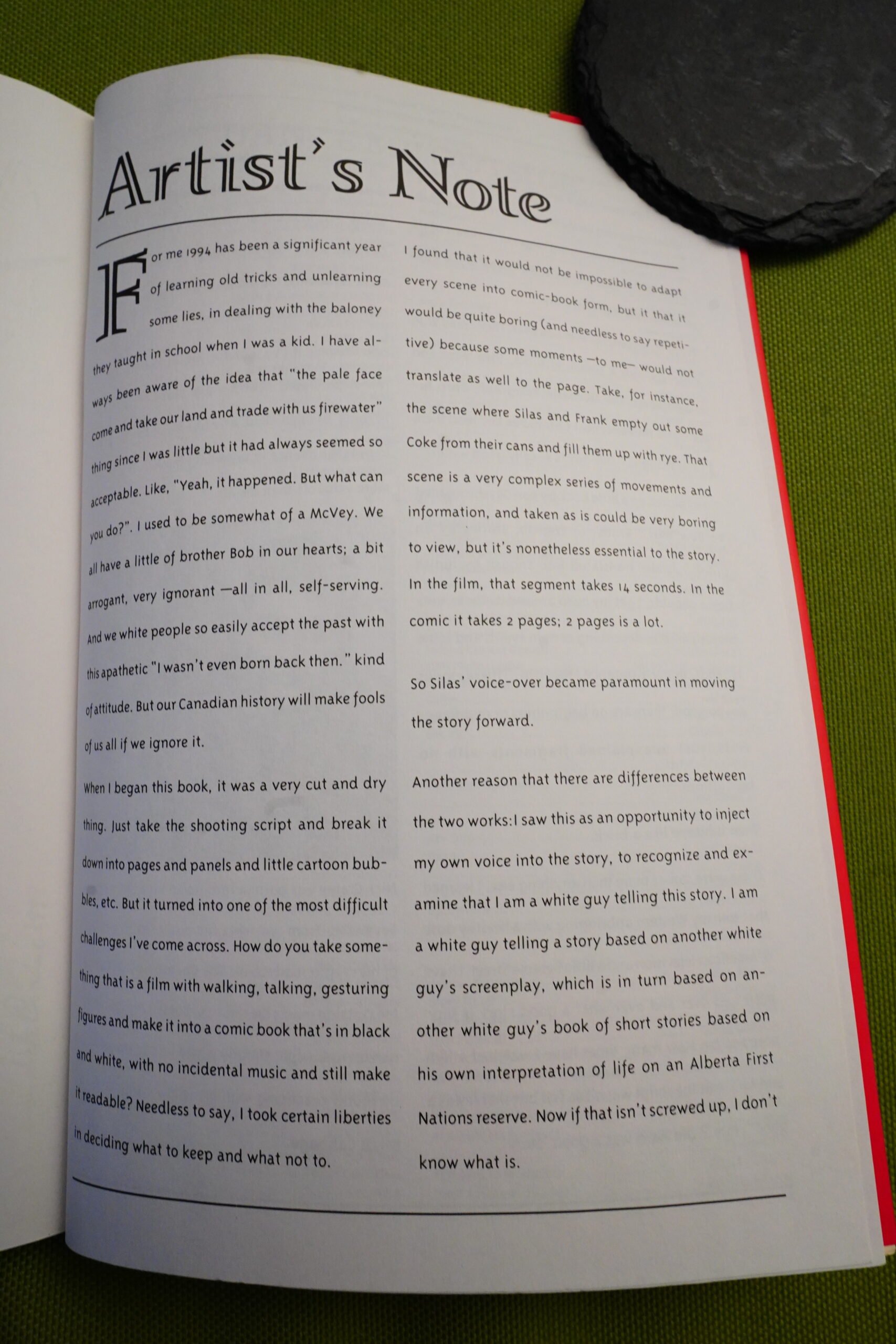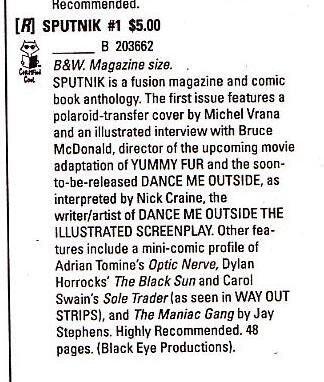Dance Me Outside: The Illustrated Screenplay (1994) adapted by Nick Craine
I remember seeing this book in the stores at the time, but I didn’t pick it up because I though “eh, if there’s one thing I hate, it’s comics that read as if they’re movie scripts”, and this is presented as an adaptation of a movie script, so I assumed it would be awful. Because if there’s another thing I hate, it’s adaptations.
(OK, the latter bit isn’t quite true — there’s a whole lot of fantastic adaptations, but it’s always caveat emptor.)
So I didn’t buy this until, like, a decade ago? Let’s re-read it now.
Right, this is indeed adapted from the screenplay… which again is an adaptation of a book (a short story collection, apparently).
Right, the voice-over… did the movie have a voice-over, I wonder? On the comics page, it seems rather old fashioned: Having a narrator like this mostly went out of style in the 80s (before making a slight return a decade ago).
Heh, even titles behind the characters.
Craine’s rendering had developed a lot since his last book, Cheese Heads. It’s now more stark and less scratchy, and it’s a quite appealing look. His figures still look kinda the same — like how odd that guy’s head is in the final panel.
Craine tries to make his characters easier to tell apart by giving them different hairdos and having some of them wear hats and stuff, but it can still be pretty difficult to tell what’s actually going on — just basic stuff like who’s talking to who, because there’s so many characters and they all pretty much look the same.
Even with the narration, it can be difficult to understand whatever they’re talking about. I’m assuming this was clearer in the movie, because it seems to be pretty successful:
A television series, The Rez, was spun off from the film in 1996.
Good intentions pave the way to Message Movie Limbo.
Anyway, back to the comic book — many of the scenes are extremely condensed, and I’m not sure the resulting confusion is always intended.
This is an interesting spread. I like how on the right hand page here, after the head butt, the guy falls toward the left, leading the eye that way, and then pandemonium erupts — as if the break in reading direction leads to chaos. It’s cool.
I’m of two (at least) minds about the book. I don’t feel like the voice-overs are necessary all the time — it sometimes feel like we’re been explained at, which is never a comfortable feeling for a reader. The book feels to brief; perhaps with a larger page count the voice-over could have been ditched altogether? But is it a good read? Yeah… there’s lots of good bits, some interesting characters, a plot twist I didn’t see coming.
So it’s… it’s pretty good?
Craine explains himself — he felt that the voice-over is necessary to move the plot forward.
Ah, the movie was directed by the guy that planned on adapting Yummy Fur.
Nick Wyche writes in Overstreet’s FAN #6, page #116:
DANCE ME OUTSIDE: This book
adapts a screenplay which in turn
adapts a novel by W.P. Kinsella
(author of Field of Dreams)about a
group of Amerind teenagers grow-
ing up on a reservation in Canada.
The story
sharply and
succinctly
delineates the
feeling of liv-
ing on the
land of one’s
ancestors while
having no real
connection to
those ances-
tors’ history. It
also, ironically,
shows the
racism of
Amerinds to other Amerinds who try to
take themselves out of the reservation
lifestyle and blend in with European cul-
ture.
Uh — that’s an interpretation for sure!
It’s on the Hit List in The Comics Journal #173, page #129:
This is a peculiar book. Not because it’s an adapta-
tion of a screenplay (by Bruce McDonald), or be-
cause the screenplay is an adaptation of a collection
of short stories (by W.P. Kinsella), making this
graphic novel twice removed
from the original source mate-
rial. Nor is it peculiar because
the graphic novel, which takes
place entirely on an Ojibway
First Nation reserve in Alberta,
is by a white cartoonist adapting
a white filmmaker’s screenplay,
who in turn adapted a white
man’s collection of short stories based on his own
interpretations of life on the Ojibway reserve. It’s
not peculiar because this is one of the first serious
pieces of comics fiction to deal with Native Ameri-
can issues (which, on the flipside, have had a tre-
mendously rich literary tradition), or because the
Native Americans in this case are in Canada, which
has had a similar yet different history of disrespect
and misunderstanding of North American natives
than the United States.
Well, okay, maybe all of these factors contribute
to the peculiarity of Black Eye’s latest graphic
novel, but the true peculiarity lies in the quality of
the book. One would expect, given the poor history
of comics adaptations, that the original vision of
W.P. Kinsella’s stories would have long been filtered
beyond recognition by the time, via McDonald,
Craine took his hand at it.
But it is good. Craine wisely injects his own
voice, through his brush, into the story much in the
same way David Mazzucchelli did in his wildly suc-
cessful adaptation of Paul Auster’s City of Glass.
The story loosely follows the life and friendships of
three young Ojibway adults whose lives are upended
when Illiana. a member of the tribe, brings home her
new white husband for the holidays. Conflicts arise,
though not in an obvious manner, even less so when
a murder takes place on the reservation. The story
also injects some fascinating Canadian history with
regard to Native Americans. Craine strays away
from a literal translation Of events and action, choos-
ing wisely to focus on a reinvention of Kinsella’s
textual stylisms (and/or McDonald’s camera
stylisms) into his own visual voice.
There are inherent disadvantages in adaptations
of any kind, and Craineproperly subverts them by
utilizing the inherent strengths of his medium to cre-
ate a stand-alone body of work, rather than fix-using
on producing a “faithful” adaptation — which is
where. say, Kenneth Branagh went wrong with his
recent Frankenstein film. Craine is a cartoonist to
keep your eye on (his first series, The Cheeseheads.
was published by Tragedy Strikes), as is the film-
maker McDonald: his next film is expected to be
(here we go again) an adaptation of Chester Brown’s
“Ed the Happy Clown” stories.
Any fan of independent, super-hero-less comics is likely to enjoy this book; it’s nicely written, so compelling I read it in one sitting and clearly told & drawn.
I’m not able to find any substantial modern reviews of this book, but I guess it’s never been reprinted?
This blog post is part of the Total Black Eye series.


